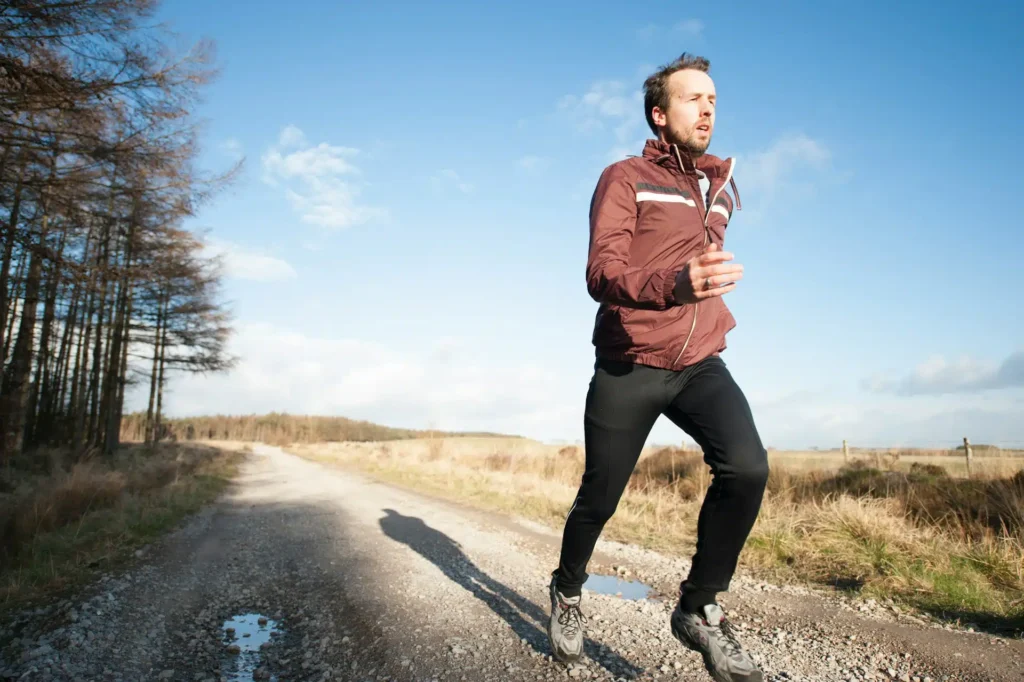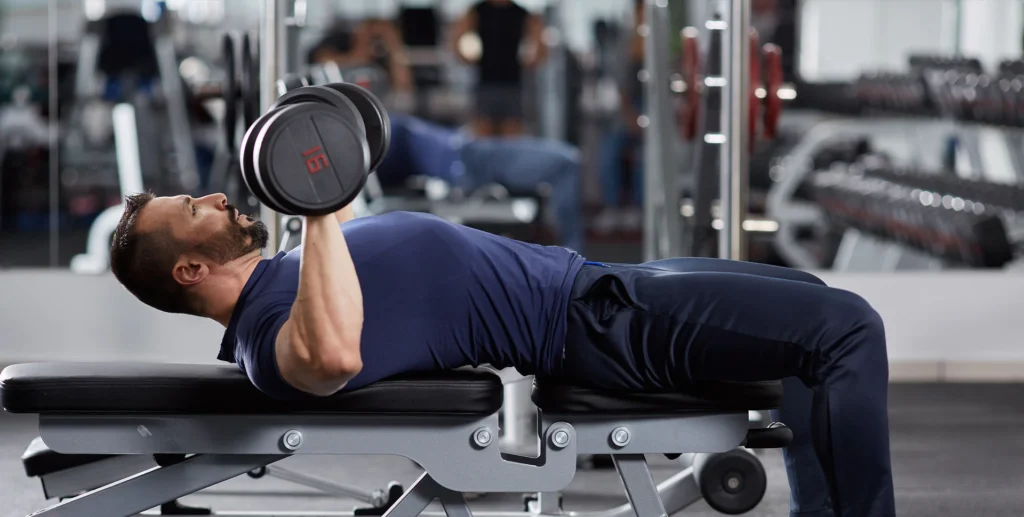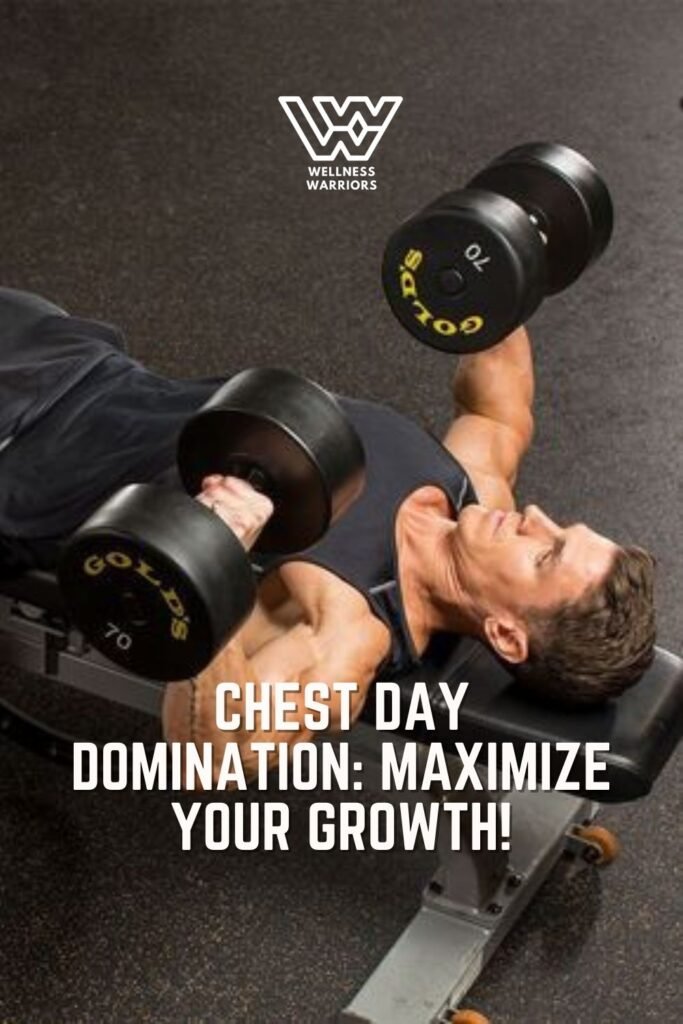
Maximize Your Gains: The Most Effective Chest Traninig Exercises for Serious Muscle Growth
Building a strong and well-defined chest is a fundamental component of any fitness regimen. Not only does it enhance your physique, but it also contributes to upper body strength, better posture, and improved athletic performance. In this article, we will explore the best chest training exercises, focusing on their importance, techniques, and how to effectively incorporate them into your workout routine.

Anatomy of the Chest Muscles
The chest primarily consists of two major muscle groups:
1. Pectoralis Major
The pectoralis major is the larger of the two chest muscles and is responsible for the bulk of the chest’s appearance. It has two main parts:
✔ Clavicular Head: This upper portion of the pectoralis major is involved in shoulder flexion and is activated during exercises that target the upper chest.
✔ Sternal Head: This lower portion is responsible for shoulder adduction and extension, engaging during movements that target the lower chest.
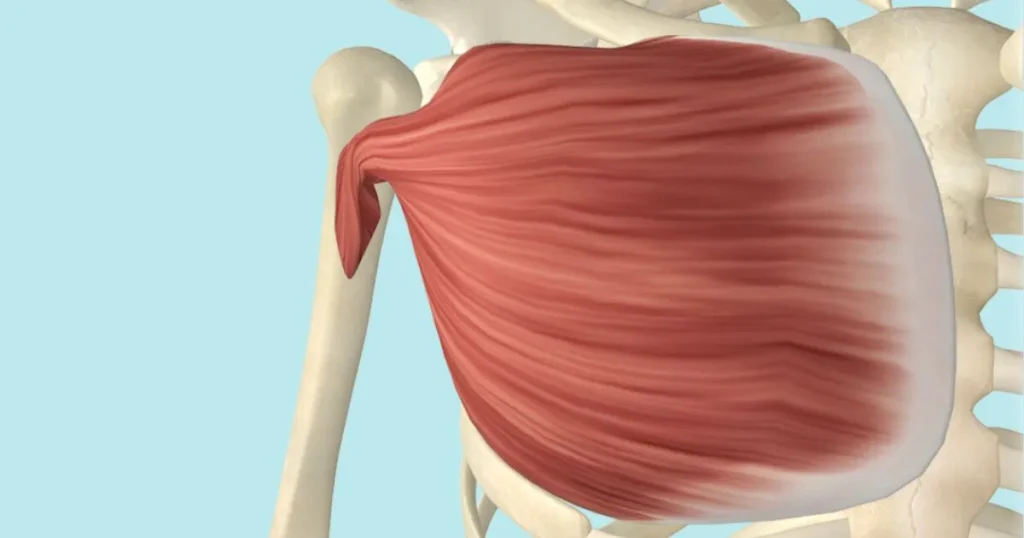
2. Pectoralis Minor
The pectoralis minor is a smaller muscle located beneath the pectoralis major. While it does not contribute significantly to the chest’s size, it plays an important role in stabilizing the shoulder
joint and assisting with movements of the scapula.
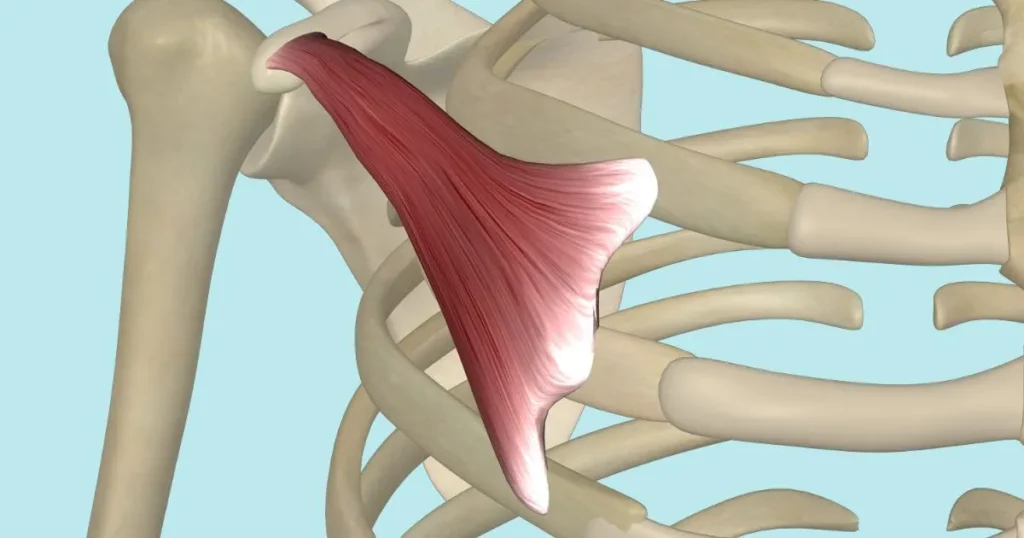
Importance of Chest Muscles in Weight Training
1. Enhancing Upper Body Strength
Strong chest muscles are crucial for overall upper body strength. They are involved in many compound movements, such as bench presses, push-ups, and overhead presses. By developing the chest, you improve your ability to perform these exercises effectively, which translates to better performance in various sports and physical activities.
2. Improving Posture
Well-developed chest muscles contribute to better posture. Strengthening the pectoralis major and minor helps counteract the effects of prolonged sitting and poor posture, which can lead to muscle imbalances and discomfort. A strong chest supports the shoulder blades, promoting proper alignment of the spine and shoulders.

3. Shoulder Stability
The chest muscles play a significant role in shoulder stability. A strong pectoralis major and minor help stabilize the shoulder joint during various movements, reducing the risk of injury. This is particularly important for athletes and individuals who engage in overhead activities, as shoulder stability is crucial for performance and injury prevention.
4. Muscle Growth and Definition
Targeting the chest muscles through weight training promotes muscle growth and definition. Exercises that engage the pectoralis major and minor stimulate muscle fibers, leading to hypertrophy (muscle growth). This not only enhances the appearance of the chest but also contributes to overall upper body aesthetics.
5. Functional Strength
Chest training exercises improve functional strength, which is essential for everyday activities. Strong chest muscles enable you to perform tasks that involve pushing, lifting, and carrying with greater ease. This functional strength is particularly beneficial for older adults, as it helps maintain independence and mobility.
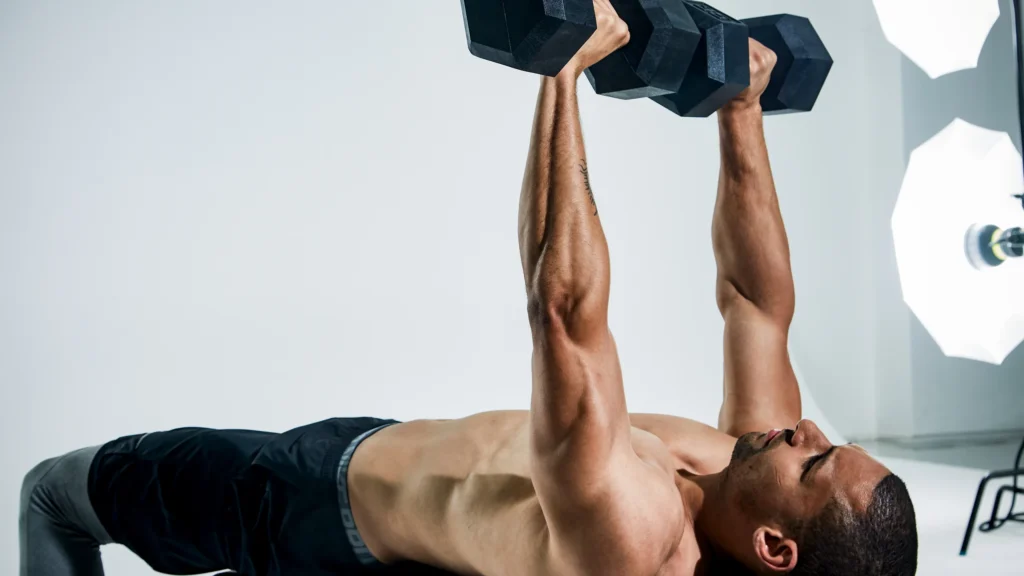
The Best Chest Training Exercises
Here are some of the best chest training exercises to include in your workout routine, each designed to target different parts of your chest:
1. Barbell Bench Press
The barbell bench press is a classic exercise and one of the most effective for building chest strength.
✔ Starting Position: Lie flat on a weight bench with your feet hip-width apart. Grip the barbell slightly wider than shoulder-width.
✔ Movement: Lower the bar to your chest, keeping your shoulder blades retracted. Push the bar back up in a straight line until your arms are fully extended.
✔ Benefits: This exercise primarily targets the pectoralis major, promoting overall chest strength and muscle mass.
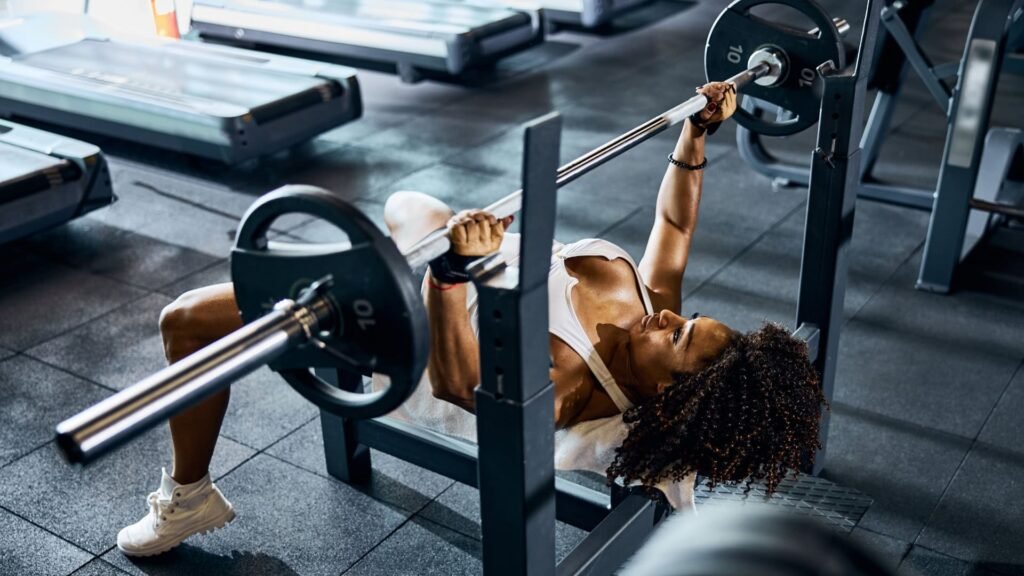
2. Dumbbell Bench Press
The dumbbell bench press allows for a greater range of motion compared to the barbell version.
✔ Starting Position: Lie on a weight bench with a pair of dumbbells in each hand, arms extended above your chest.
✔ Movement: Lower the dumbbells to the sides of your chest, keeping your elbows at a 90-degree angle. Press them back up to the starting position.
✔ Benefits: This exercise enhances muscle activation in the chest and improves shoulder stability.

3. Incline Bench Press
The incline bench press targets the upper chest, helping to build a fuller chest appearance.
✔ Starting Position: Set the bench to a 45-degree angle. Lie back with a barbell or dumbbells.
✔ Movement: Push the weight up, extending your arms fully, and lower it back to the chest.
✔ Benefits: This variation emphasizes the upper pectoral muscles, contributing to overall chest size and definition.
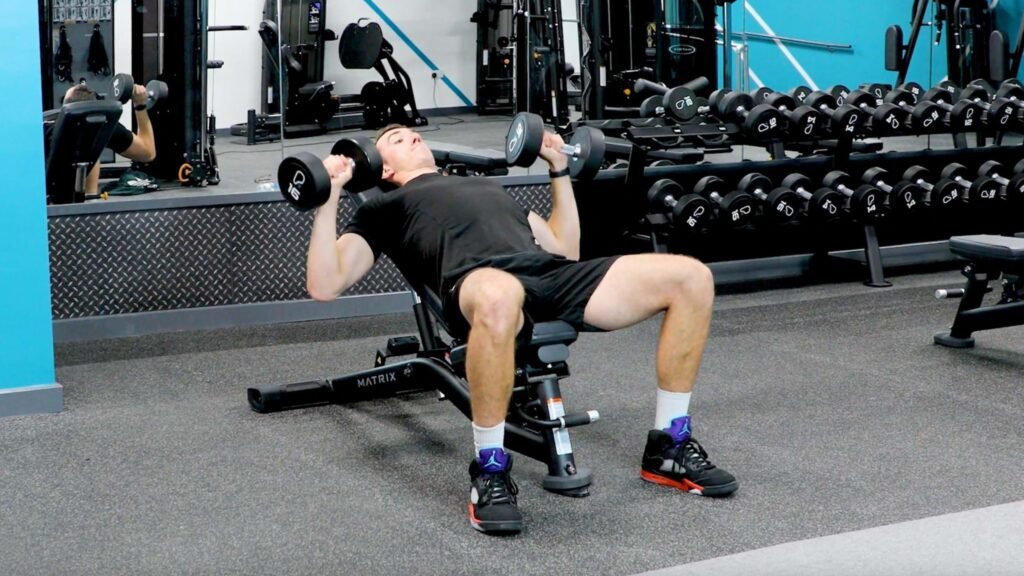
4. Decline Push-Up
The decline push-up shifts the emphasis towards the lower chest.
✔ Starting Position: Place your feet on an elevated surface (like a bench) and hands on the ground.
✔ Movement: Lower your body until your chest almost touches the floor and push back up.
✔ Benefits: This bodyweight exercise enhances strength in the lower chest while also engaging the triceps and shoulders.

5. Cable Crossover
The cable crossover allows for constant tension throughout the movement.
✔ Starting Position: Stand between two cable machines with handles set at shoulder height.
✔ Movement: Pull the cables together in front of you, keeping a slight bend in your elbows. Focus on squeezing your chest at the top of the movement.
✔ Benefits: This exercise targets both the inner and outer portions of the pectoralis major, promoting muscle definition.
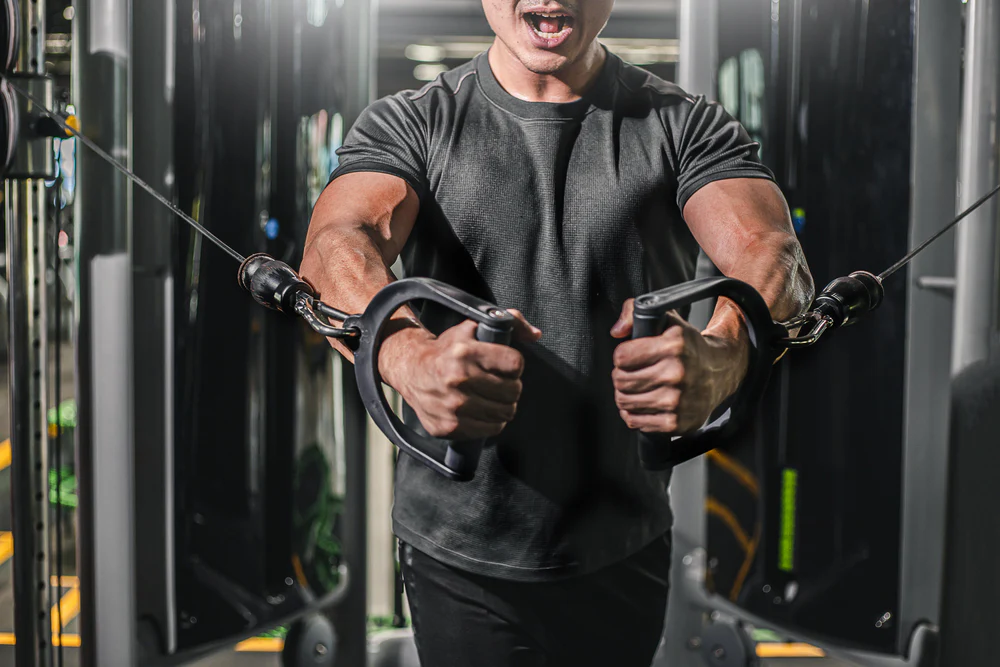
6. Chest Fly
The chest fly is an excellent isolation exercise for the chest muscles.
✔ Starting Position: Lie on a flat bench with a pair of dumbbells above your chest.
✔ Movement: With a slight bend in your elbows, lower the dumbbells out to the sides in a wide arc, then bring them back together above your chest.
✔ Benefits: The chest fly effectively stretches and activates the muscle fibers of the pectorals, enhancing muscle growth and definition.
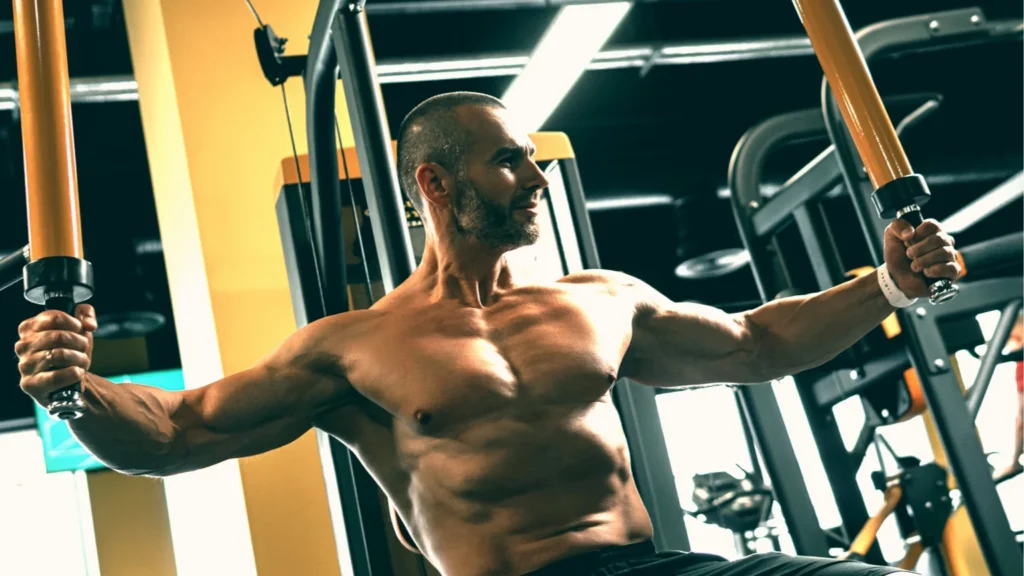
7. Svend Press
The svend press is a unique exercise that targets the inner chest.
✔ Starting Position: Stand upright, holding a weight plate with both hands at chest level.
✔ Movement: Press the plate outward while keeping your arms extended, then return to the starting position.
✔ Benefits: This exercise engages the pectoralis minor and helps improve shoulder stability.
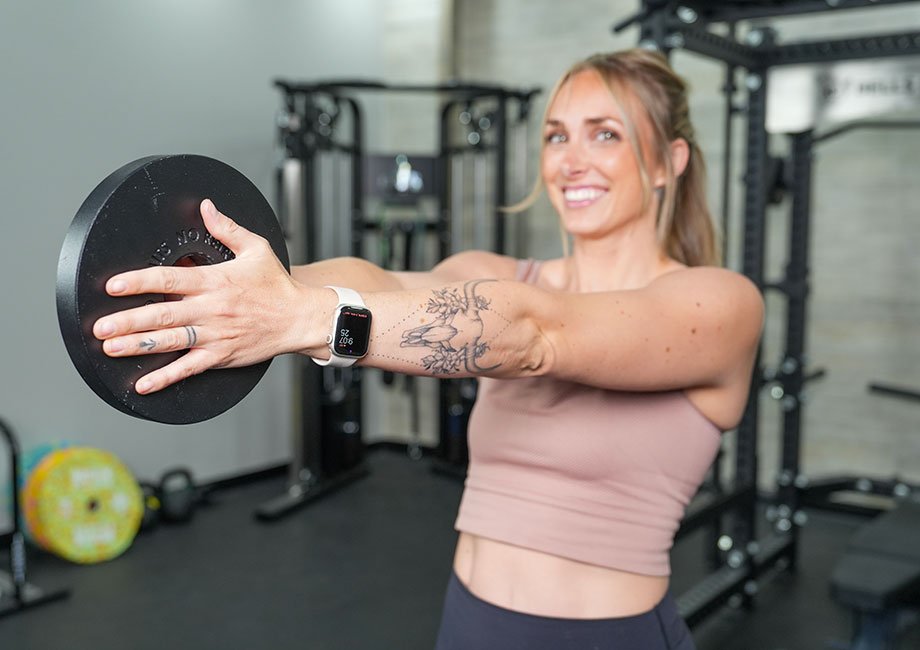
8. Diamond Push-Ups
✔ Diamond push-ups focus on the inner chest and triceps.
✔ Starting Position: Assume a push-up position, but bring your hands together to form a diamond shape with your thumbs and index fingers.
✔ Movement: Lower your chest towards your hands and push back up.
✔ Benefits: This variation effectively targets the inner portions of the chest while also engaging the triceps.

9. Pec Deck Machine
The pec deck machine is excellent for isolating the chest muscles.
✔ Starting Position: Sit on the machine with your back against the pad and arms on the levers.
✔ Movement: Bring the levers together in front of your chest, squeezing your pectoral muscles.
✔ Benefits: The pec deck machine provides a controlled range of motion, allowing for focused muscle activation and growth.
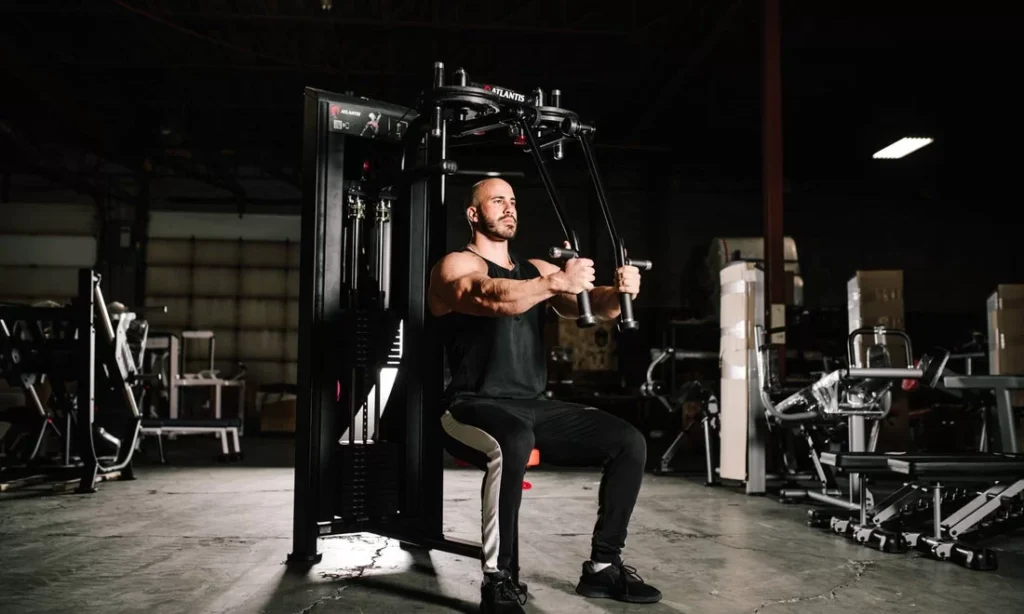
10. Dumbbell Pullover
The dumbbell pullover is a great exercise for expanding the chest.
✔ Starting Position: Lie on a flat bench with your upper back supported and feet flat on the ground. Hold a dumbbell above your chest with both hands.
✔ Movement: Lower the dumbbell back over your head in a controlled manner, then return to the starting position.
✔ Benefits: This exercise targets both the chest and the lats, promoting upper body strength and muscle expansion.

READ MORE: Try Must-Do Shoulder Training!
Creating an Effective Chest Workout Routine
To maximize your results, consider the following tips for designing your chest workouts:
✔ Include Variety: Incorporate different exercises targeting various angles and parts of the chest. This ensures all muscle fibers are engaged for optimal growth.
✔ Prioritize Form: Maintaining proper form is crucial to prevent injury and ensure effective muscle activation. Consider working with a personal trainer if you’re unsure about your technique.
✔ Progressive Overload: Gradually increase the weights or resistance used in your workouts to stimulate muscle growth. Aim for heavier weights with fewer reps as you progress.
✔ Frequency: Aim for at least one dedicated chest day per week, allowing sufficient recovery time for muscle growth.
✔ Nutrition: Support your training with a balanced diet rich in protein (aim for about 1.6 to 2.2 grams of protein per kilogram of body weight) to promote muscle repair and growth.

Key Recovery Techniques after your chest training
1. Cool Down
Cooling down after your workout is crucial for gradually lowering your heart rate and preventing dizziness or fainting.
Method: Spend 5-10 minutes performing light aerobic exercises, such as walking or gentle cycling. Follow this with static stretching, focusing on the chest, shoulders, and triceps to promote flexibility and relaxation.
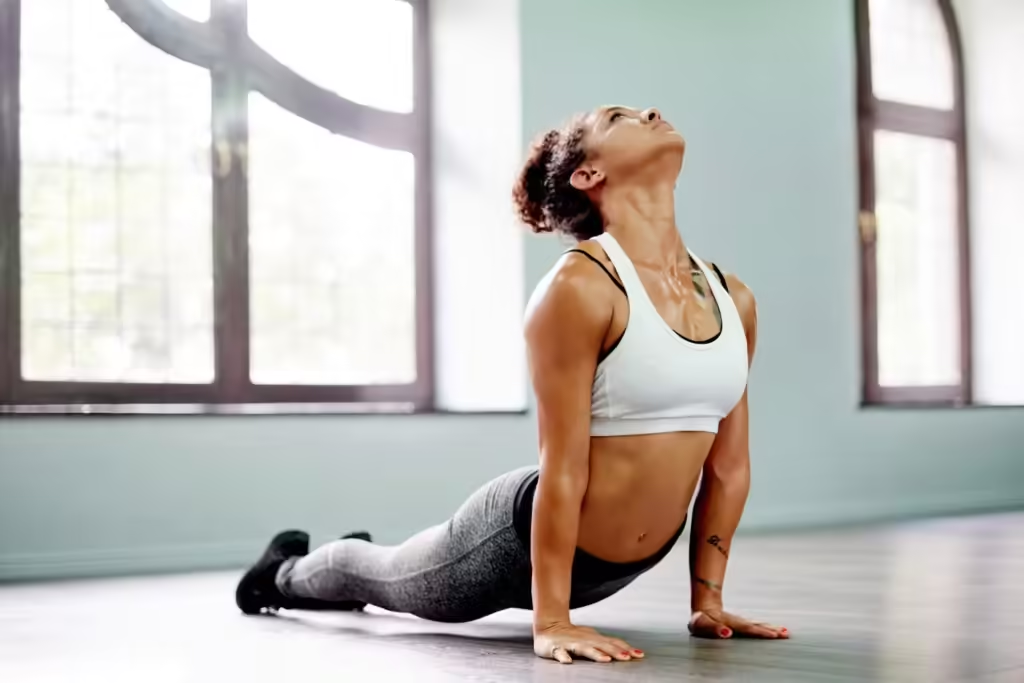
2. Hydration
Staying hydrated is essential for recovery, especially after a strenuous workout.
✔ Importance: Water helps transport nutrients to your muscles and aids in the removal of metabolic waste products. Dehydration can lead to increased muscle soreness and fatigue.
✔ Tip: Drink water immediately after your workout and continue to hydrate throughout the day. Consider electrolyte-rich drinks if your workout was particularly intense.

3. Nutrition
Proper nutrition plays a vital role in muscle recovery and growth.
✔ Protein Intake: Consuming protein after your workout helps repair muscle tissues. Aim for 15-25 grams of protein within 30-60 minutes post-exercise. Good sources include protein shakes, Greek yogurt, or lean meats.
✔ Carbohydrates: Replenishing glycogen stores is essential, especially after high-intensity workouts. Include healthy carbs like whole grains, fruits, or sweet potatoes in your post-workout meal.
✔ Healthy Fats: Incorporate healthy fats, such as avocados or nuts, to support overall health and provide sustained energy.

4. Active Recovery
Engaging in low-intensity activities on rest days can promote blood flow and accelerate recovery.
✔ Activities: Consider activities such as walking, swimming, or gentle yoga to keep your body moving without adding significant stress to your muscles. This can help alleviate soreness and stiffness.
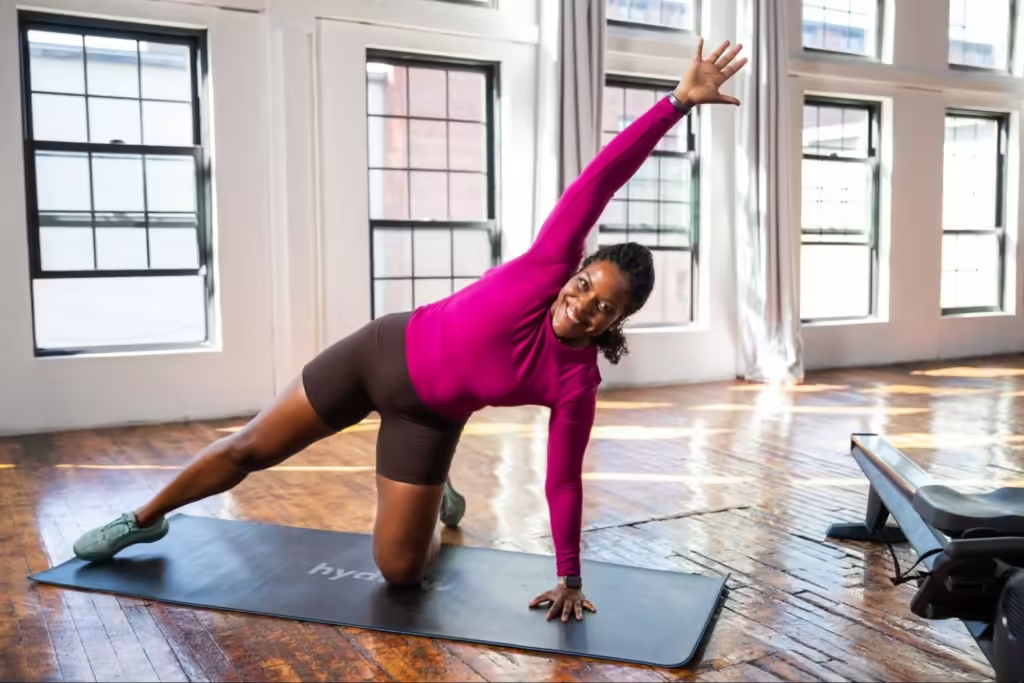
5. Sleep
Adequate sleep is one of the most critical components of recovery.
✔ Importance: Sleep is when the body undergoes repair and regeneration. Aim for 7-9 hours of quality sleep per night to support muscle recovery and overall health.
✔ Tip: Create a bedtime routine that promotes relaxation, such as reading, meditating, or limiting screen time before bed.

6. Foam Rolling and Massage
Self-myofascial release techniques, such as foam rolling, can aid in reducing muscle tightness and soreness.
✔ Foam Rolling: Spend a few minutes rolling out your chest, shoulders, and upper back to help release tension and improve blood flow. This can aid in recovery and enhance flexibility.
✔ Massage: Consider professional massages or using massage tools to relieve muscle tension. This can be particularly beneficial if you experience tightness or soreness.
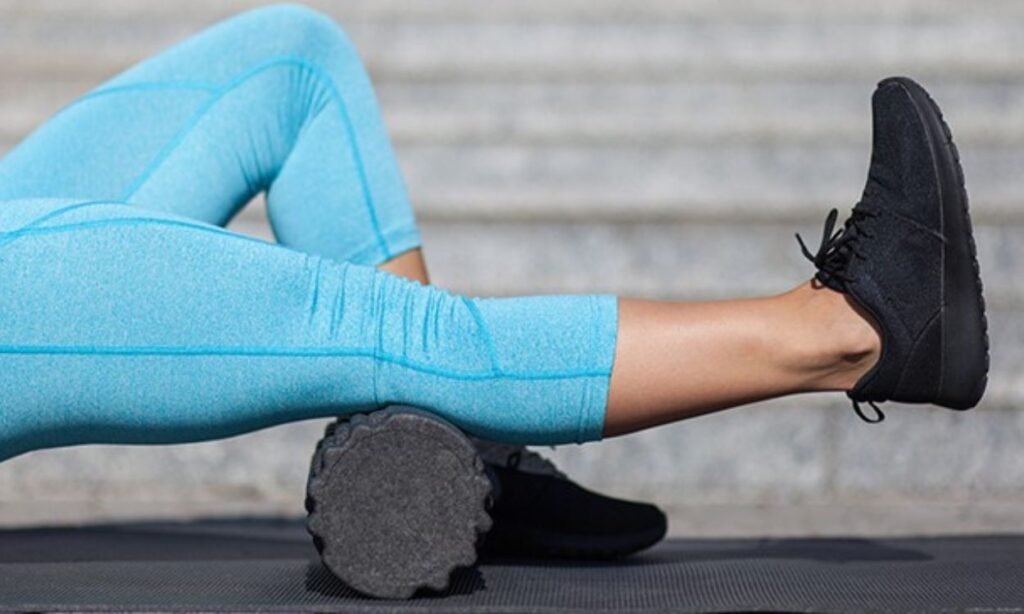
7. Stretching
Incorporating stretching into your recovery routine can improve flexibility and reduce the risk of injury.
✔ Static Stretching: Focus on the muscles worked during your chest workout, including the pectorals, shoulders, and triceps. Hold each stretch for 15-30 seconds to promote relaxation and lengthening of the muscles.
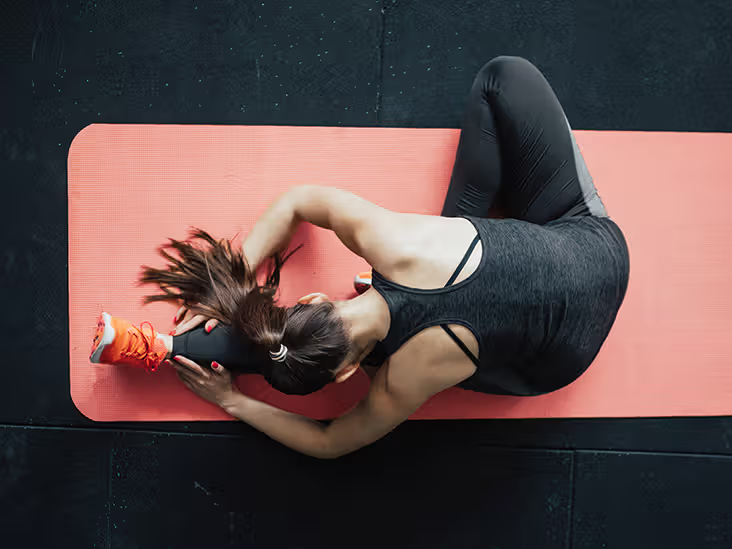
8. Listen to Your Body
Paying attention to your body’s signals is vital for effective recovery.
✔ Signs of Overtraining: If you experience excessive fatigue, prolonged soreness, or decreased performance, it may be a sign to take additional rest days or modify your training intensity.
✔ Rest Days: Incorporate rest days into your training schedule to allow for full recovery, especially after intense chest workouts.

Conclusion
Incorporating the best chest exercises into your training program is essential for building strength, improving posture, and enhancing your physique. By targeting the different parts of your chest with a variety of exercises, you can achieve a well-developed chest and maximize your upper body strength.
Remember to focus on proper form, gradually increase weights, and prioritize recovery to experience the best results from your chest workouts. Embrace the journey towards a stronger, more defined chest, and enjoy the benefits it brings to your overall fitness!
